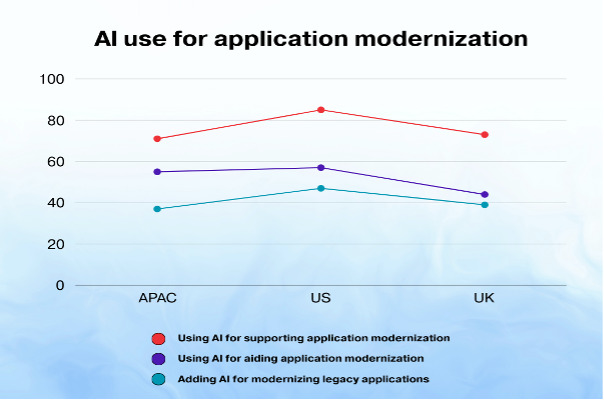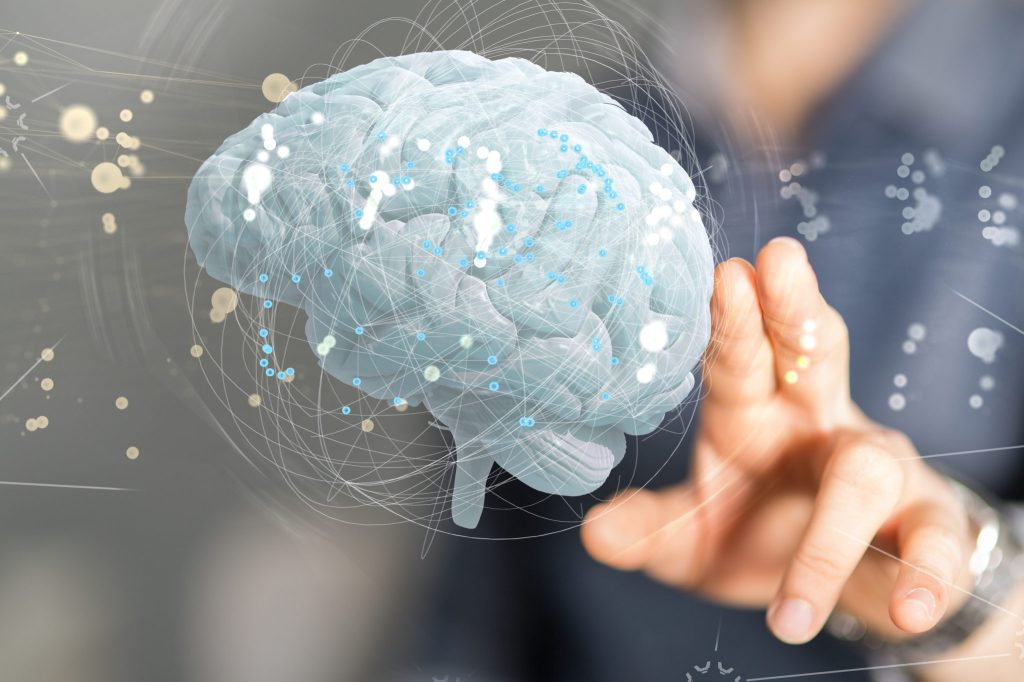Artificial Intelligence (AI) and Business Intelligence (BI) Revolutionize Legacy System Modernization: A Data-Driven Approach
3AI August 3, 2024

Featured Article
Author: Pankaj Zanke, Sapient
Legacy systems, which many organizations rely on, often become technological burdens for the same organization. Built with old technologies, tools, and architecture, they need help keeping up with modern business’s latest technological needs. Scaling and integration issues and security issues also affect agility and innovation. However, how they are disposed of must be corrected since it impacts the organization’s resources. Historical data stock in paper or electronic form carries a historical value, a cumulative expenditure of time and technology. Adopting modernization according to strategy can give new life to these systems, give importance to hidden potential, and propel organizations forward.
Transforming legacy IT systems is challenging. Let’s examine a graph depicting ‘legacy systems supporting business-critical functions’ to understand why many IT industries have started modernizing them.

Points evident from the graph above are:
- 53% of companies have some reliance on legacy systems but are in the process of modernizing.
- 24% of companies are heavily reliant on legacy systems for business-critical functions.
- Business-critical systems of 17% of companies are primarily running on modern systems.
- The entire infrastructure of 6% of companies is primarily running on modern systems.
This article explores how Artificial Intelligence (AI) and Business Intelligence (BI), combined with data modeling and business flow diagrams, can change legacy system modernization. We’ll also examine how AI empowers data extraction, optimizes code, and incorporates predictive maintenance. The role of data modeling in facilitating BI integration and using business flow diagrams to ensure a collaborative approach is today’s primary need.
The Intelligent Partner in Legacy System Modernization
AI brings a unique set of capabilities to the picture, transforming and including technological advancements into legacy system modernization from an arduous task into a streamlined process:
- Automated Data Extraction: Old systems of retaining details are also diverse; the material may be written in unstructured files such as texts, datasheets, codes, and reports. Pulling out this data is cumbersome, and the possibility of error is enormous. It is also helpful since data extraction can be done using AI-powered tools, which can quickly and effectively analyze data from various sources and provide organizations with analyses that save much time.
- Code Optimization and Refactoring: Such impacts of legacy systems are inefficiencies, security issues, outdated technology, and methods and practices in legacy codes. This code can be processed with AI’s help by correctly identifying old code blocks that are no longer being used, marking potential security issues, and sometimes rewriting on more efficient and suitable platforms. Such information enables software developers to either enhance existing code or set them on the right track to adopt a more robust and secure new technology base.
- Predictive Maintenance for Proactive Action: Legacy systems are inclined more towards failures that can hamper operations and take up a lot of downtime; leveraging the resources of different organizations. AI enables the identification of potential failures based on system logs and performance statistics collected in the past. This makes it easier for organizations to maintain their systems where problems likely to arise are solved before they worsen, reducing the system’s downtime.
Let us look at the percentage of AI used for application modernization in the US, UK, and Asian countries.
| Region | Using AI for supporting application modernization (%) | Using AI for aiding application modernization (%) | Adding AI for modernizing legacy applications (%) |
| APAC | 71 | 55 | 37 |
| US | 85 | 57 | 47 |
| UK | 73 | 44 | 39 |

Data Modeling: The Bridge Between Legacy Systems and BI
Data modeling serves as a connection between updated legacy systems and BI tools. Data modeling enables smooth integration by effectively organizing and structuring data. It enables organizations to make decisions based on data analysis:
- Entity-Relationship Diagrams (ERDs): ERDs show the relation between data entities and the system, such as customers, products, orders, etc. These diagrams assist the developers in identifying data dependencies by creating an explicit data model that acts as a blueprint for the BI integration. Thus, by realizing the nature of data flow and interconnectivity within the software system, BI tools can easily access and process the required information and make the work much more manageable.
- Data Transformation: Data residents could also be extracted from legacy system sources, which might need to be in a format more compatible with current-generation BI tools. Activities linked with pre-processing include data/tape scrubbing, erasing mixed data or code standards, handling missing values, and developing structures for their analysis.
Business flow diagrams (BFDs) are a rather non-strict approach to legacy system modernization. They are a collective tool that shows the directions and patterns of data sharing, processing, and even decision-making so that all organizations are in harmony and clearly understand the modernization objectives.
The Symphony of Success: AI, BI, and Business Stakeholders
Creating a structure for successful collaborations among AI, BI, and business partners is key to modernizing an organization’s outdated system. Each part plays a part in reaching the company’s expansion objective.
- Business Analysts: Business requirements necessitate technical solutions. Through the examination of business operations and the needs of users, they strive to bridge the divide. To specify the required functions and information exchanges for the updated system. Business analysts find BFDs to be a useful tool for conveying requirements to their technical teams.
- Data Scientists: They employ their artificial intelligence and machine learning talent to create and integrate AI models to index data, review code, and improve performance through predictive maintenance services.
Thus, the narrative that exists to improve the business has always been about the modernization of legacy systems. But the situation is gradually changing. With the proper strategic approach combining AI and BI, organizations may find new opportunities in their legacy systems beyond implementing new technologies with broader meaning.
In this context, AI plays an apparent role in transforming the organizations. Also, one can use AI to analyze the discrepancies of legacy code and indicate its weaknesses and inefficiency. Doesn’t this enable the developers to refactor existing application code or upgrade to a secure and sustainable platform? The bonus of being able to predict possible failures by running an analysis with the help of AI makes it all the more recommendable.
But magic doesn’t lie solely in technology. Data modeling and business flow diagrams provide the basic structure for a collaborative approach, fostering clear communication and aligning different stakeholders throughout the technological advancement journey. Business analysts translate business needs into actionable functionalities and data flows for systems.
Data scientists trained in this area use AI and ML for this purpose since they have better knowledge of creating and installing new programs. They will cooperate with BI developers, who will have to integrate this program into BI tools commonly used in organizations today. This ensures that everyone is informed, moving in the same direction, and, in the end, working together towards a common cause.
When AI and BI support modifying legacy systems, it becomes more than a technological advancement. This is an organization’s strategy change, where agility and innovation are involved. The data and code formats presented can be used to draw conclusions about an organization’s capacity to make changes, find optimizations from which the organization can benefit, and make viable decisions for its growth. The ability to adapt and innovate is paramount for organizations to grow.
References:
https://www.redhat.com/en/resources/app-modernization-report
https://managementevents.com/news/legacy-it-system-modernization-benefits-barriers/
Title picture: freepik.com






